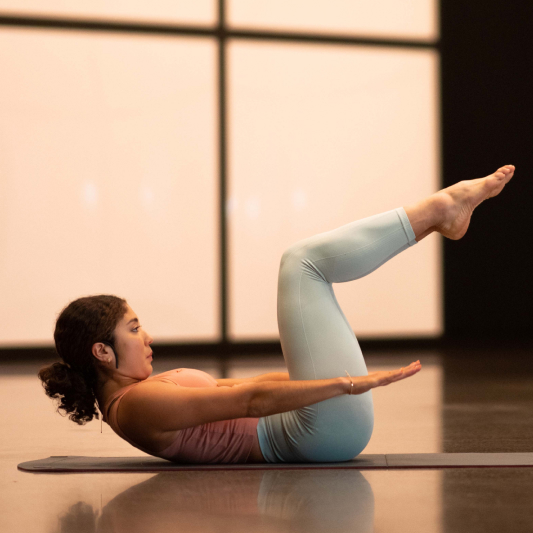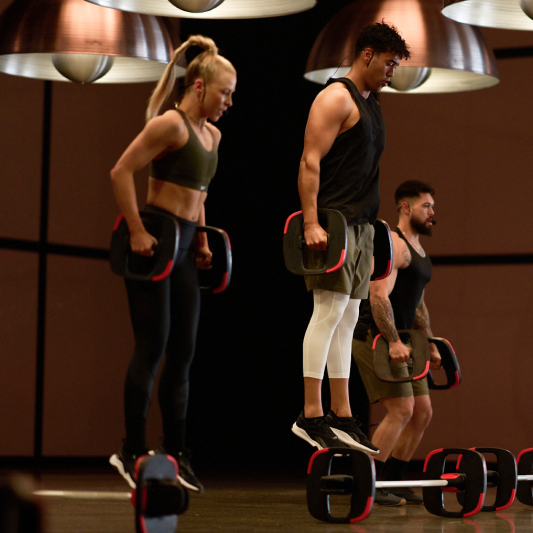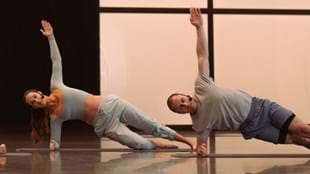For the past 18 months, I’ve been teaching a CEREMONY class at 5.40am. That means a 4.30am alarm so I can have a coffee, remind myself of the choreography, and make sure I’m in the studio by 5.25am ready to welcome in members. And I’m not going to lie, it’s been hell.
I’m just not a morning person. By 3pm, I want to go back to bed. On a recent trip back to the UK, where classes tend to start later than in New Zealand, my friends and family looked at me like I was insane. “Why on earth would you teach at that time?” they asked me. My answer was that I really wanted to teach the program, and that was the only timeslot available.
Having some time away from the class allowed me to reflect on how much joy (and financial reward) it was bringing me versus the fact that I spent most of Monday – and some of Tuesday – feeling tired and grumpy. When I returned to New Zealand I was able to pick up a different timeslot, and dropping that 5.40am class was the best decision I made all year.
Getting our teaching schedule just right is a fine art. There are so many factors in play: our availability, what slots come up where and when, which programs we want to teach at which club… I’ve been teaching for 14 years and I still struggle to get it just right. If you’re looking at your schedule and wondering if it could be better balanced, here are some tips from Les Mills Trainers:
Have at least one day off from teaching
“I’ve found that having one complete day off from exercise/teaching every week is so important for me,” says Bevan James Eyles. “It’s my ultimate recharge and I have it in a guilt-free way, where I can embrace it and soak up what a relaxed day has to offer.”
Des Helu agrees: “I think it can be hard as fitness enthusiasts to step back sometimes, because we love what we do, but being able to recognize the work and toll that our jobs put on our bodies is super important. To avoid burnout, I listen to my body, acknowledge when it's had enough and give myself time to recover.”
Mix up your training
“The best way to avoid overtraining and overuse is to ensure adequate rest between sessions – so look at your schedule and see what you can move around,” says Steve Tansey. "If you’re doing a lot of one type of class – weight training, high impact, or HIIT – consider training to teach different types of programs or using LES MILLS+ to mix your training up.
“Have a look at this study we conducted on the type of injuries encountered by Les Mills Instructors. By varying our training, we can avoid a lot of these injuries, while ensuring we’re not getting too much repetitive loading through our teaching and training.”

Set boundaries with taking on extra classes or covers
“I’ve learned to know my limits with my energy output, so nowadays I know when to say no,” says Bevan. “Many of us take more and more on, which leads us towards that place of fatigue. Knowing your boundaries and guarding them, and knowing when to say no, are so important for self-care.”
Don’t teach injured
“As tempting as it can be to “just push through” – don’t,” says Steve. “You want to be able to keep teaching for many years to come and one of the surest ways to jeopardize your future classes is to exercise when your body is telling you to rest. Yes, you might lose out on some money in the short term and your members will miss you, but isn’t it worth taking a few classes off and getting better, than risking not being able to teach for the rest of the year?”
Don’t forget self-care
“I’ve learned to accept that sometimes it’s better to pause whatever exercise I’m currently into and focus on whatever needs fixing ie: better sleep, physical rest, nutrition, brain space or simply tired legs/body,” says Rachael Newsham. “This helps me enjoy those workouts that I do get around to doing far more because the body, mind and spirit can handle them. This in turn increases my levels of motivation, because I feel successful. In the past I would have just muscled through it all and kept on going, thinking it was a sign of weakness if I couldn’t manage all the workouts the world threw at me. That made me lose enjoyment and my motivation subsequently decreased.”

Have time for things outside of fitness
“This can be social time, a hobby that has nothing to do with fitness, or just going to the movies,” suggests Bevan. “We fitness professionals can become a bit one-dimensional, so having other things in our lives can give us a good recharge and a “timeout” from the often-consuming world of fitness.”
Plan breaks from teaching throughout the year
“I've actually made my mental health worse by forcing myself to teach,” says Instructor Gabby James. “It's easy just to say “fake it” but sometimes you just can’t. We give so much of ourselves to participants that we sometimes lose time for ourselves. My advice is to take a break. I had taken a couple of weeks off to just give me some time and I feel so much better. I taught Saturday, played all my favorite songs and had one of the best classes of my teaching life! The participants will understand that we need to look after our mental health, not just our physical health. Take a break, get outside, go to the gym, go dancing, yoga, run, watch TV, have a back massage – just take a couple of weeks off and you may find you come back refreshed and recharged.”
Les Mills Participant Guidelines
As a review, here are a few of the Les Mills participant guidelines that we promote for optimal results and minimal injury risk:
- Take a maximum of three BODYPUMP™ classes per week and ensure they are separated by 48 hours to promote muscle tissue growth and recovery
- Refrain from strength training for at least six-hours after LES MILLS CORE™, because the three-dimensional core was overloaded and may not be able to maintain stability during weighted exercises
- Limit your vigorous-intensity cardio classes (BODYATTACK™, BODYCOMBAT™, BODYSTEP™, RPM™) to two per day, preferably separated into morning and evening sessions
- Keep your high-intensity minutes greater than 90% heart rate max, and below 9% of total weekly exercise time, which is likely equal to two LES MILLS GRIT™ or LES MILLS SPRINT™ sessions per week.

I teach a lot of one program. How can I keep myself safe?
Fitness Scientist Dr Jinger Gottschall suggests the following if your schedule is pretty heavy on certain programs:
BODYPUMP overload
If you teach more than three BODYPUMP classes per week, or teach BODYPUMP on consecutive days, be deliberate about which classes you will consciously use less weight in. You can still be a motivating example with model technique and thoughtful cueing without the demanding Instructor weight if necessary. When possible, change which specific class or classes you make this adjustment for on a weekly basis.
LES MILLS CORE fatigue
If you teach LES MILLS CORE prior to BODYPUMP or without the recommended six-hour recovery, it would be ideal to use less weight. Similar to the rationale above, you can still deliver a quality class while reducing your own injury risk.
Excessive cardio
If you teach back-to-back Les Mills cardio formats, or if you teach two or more cardio classes per day, your food and fluid intake is critical to maintain energy and health. For example, if the classes start in the early morning, it’s imperative you at least eat a small breakfast. Or if you teach one class in the early morning and another at midday, it’s critical you eat a meal within an hour of finishing your first class to promote recovery before the second. Also, hydration is important for both these scenarios, so be mindful about the amount and time of intake.
HIIT all the time
If you coach LES MILLS GRIT or SPRINT more than twice a week, be aware of how much time you are spending above 90% heart rate max during these sessions. The best method is to utilize a heart rate monitor with a chest transmitter to track your total time each week in this zone and adjust accordingly. If you realize you are significantly above 9% of total exercise time in the highest zone, spend more minutes instructing from the floor. You can easily incorporate this strategy when you are familiar with the group and they are confident with the release exercises.
Join LES MILLS+ with your exclusive Instructor discount to help balance out your training!








